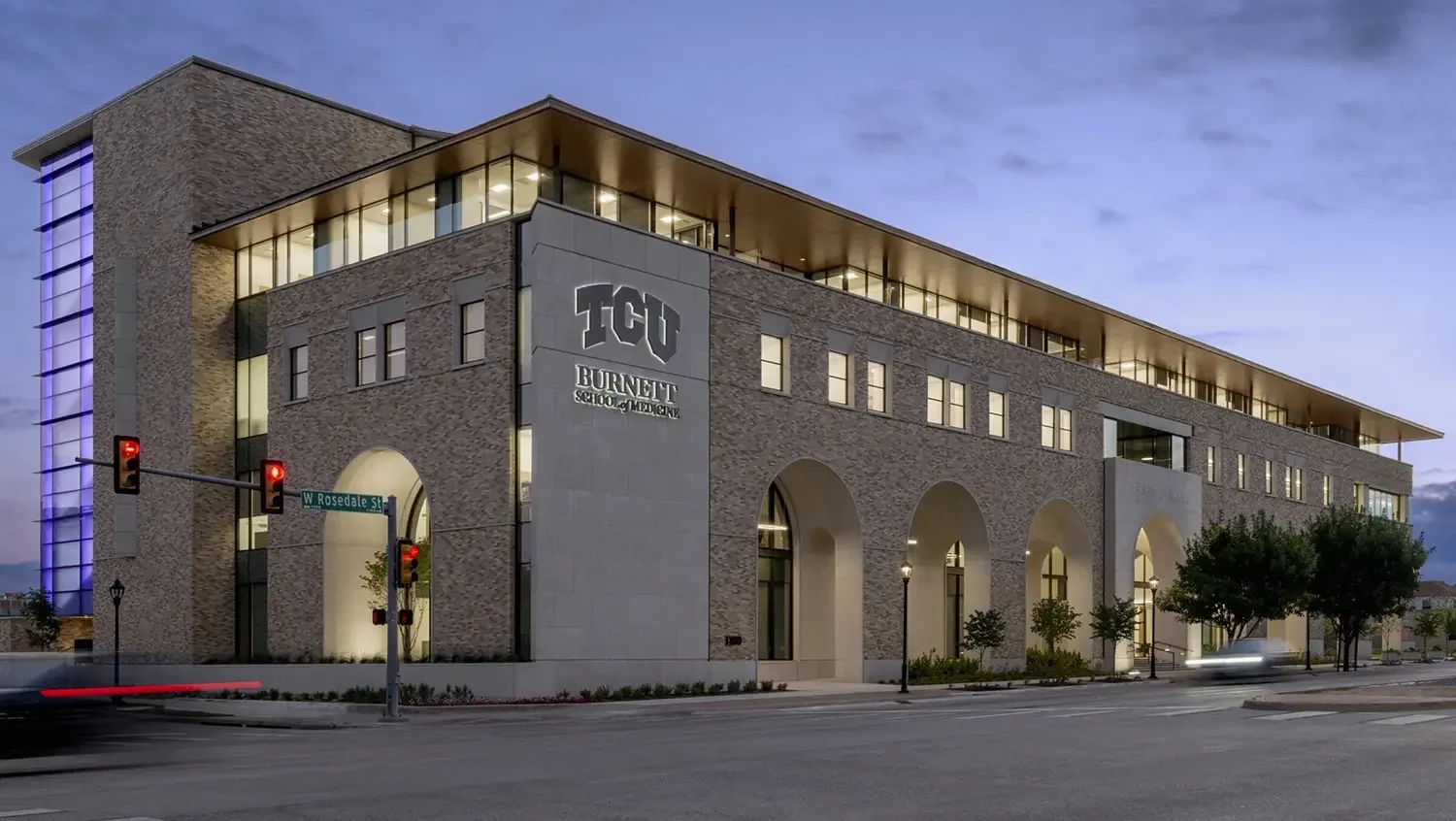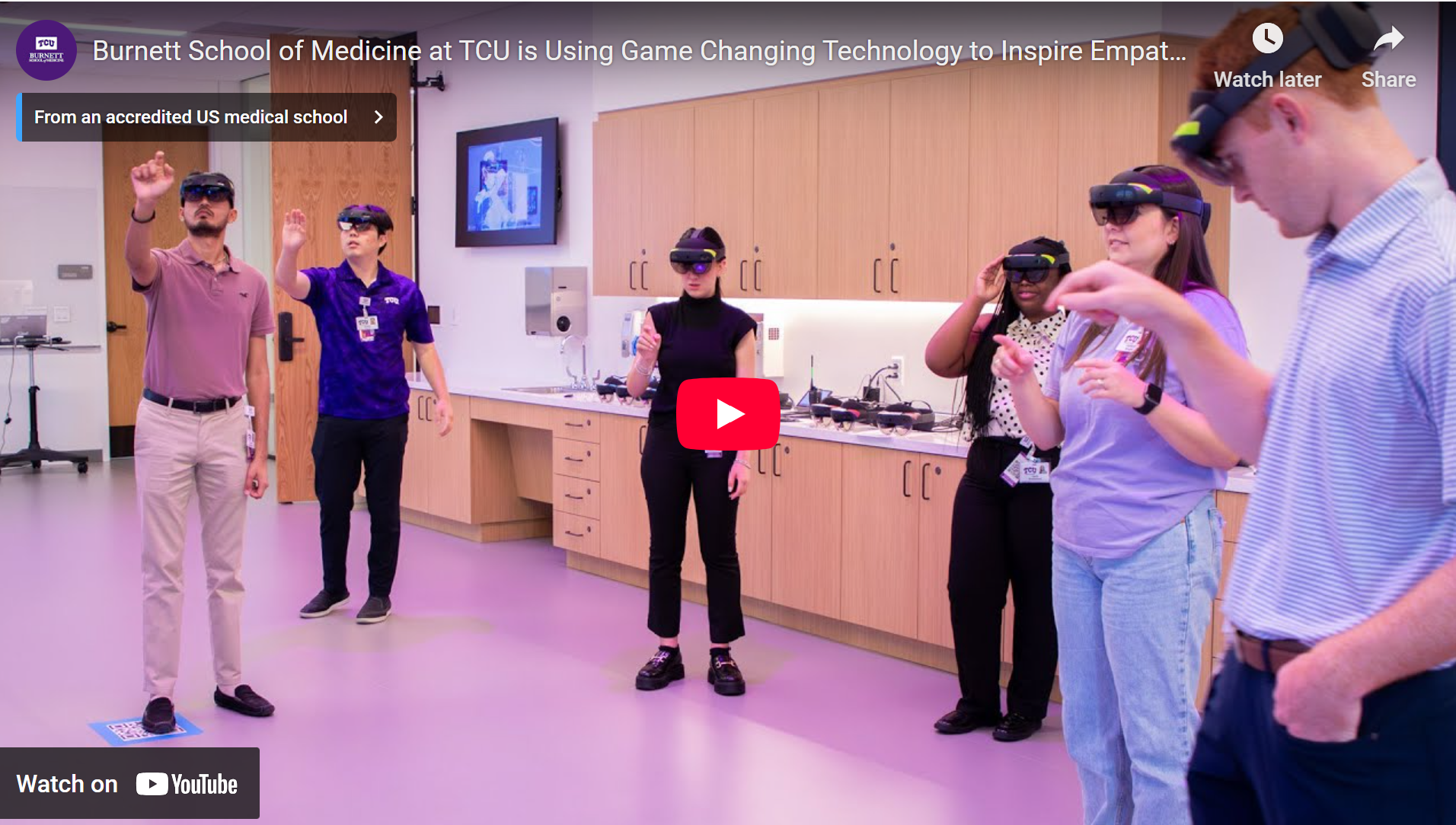How TCU Blends Cadaver Labs & 3D Anatomy to Transform Medical Education
TCU Anne Burnett Marion School of Medicine - Arnold Hall – Photo courtesy of TCU
TL;DR: At Texas Christian University’s Burnett School of Medicine, cadaver labs are paired with HoloAnatomy® 3D mixed reality. Students explore life-sized virtual cadavers, zooming into structures for clearer spatial understanding and surgical readiness.
The Dissection Dilemma: Traditional tools can’t keep pace
For generations, cadavers and textbooks have formed the foundation of medical anatomy education. But these traditional tools have limitations: cadaver labs are costly, logistically challenging, and inherently finite. In a rapidly evolving medical field, institutions are asking how to modernize education without compromising depth or quality.
“Disruptive innovations come rarely. But when they do, they forever change the way something has been done. Anatomy learning is a perfect example.”
TCU’s Bold Blueprint: Tradition + transformation
Texas Christian University’s Burnett School of Medicine saw an opportunity to do things differently. As a young and innovative medical program, TCU has consistently embraced technology from the outset. Its leaders envisioned a future where students learned anatomy through both tradition and transformation, where cadaver dissection could be enhanced by immersive visualization. This vision led them to the groundbreaking HoloAnatomy® immersive learning platform.
An XR Odyssey Begins: Partnering with CWRU and AlensiaXR
TCU’s journey began with a collaboration with Case Western Reserve University, where HoloAnatomy® was originally developed, and with AlensiaXR, the team that brought it to life across institutions. TCU integrated HoloAnatomy® not as a replacement for cadavers but as a complementary tool. This blended model enabled deep and flexible engagement.
As one faculty member explained:
“We use it in conjunction with cadaver anatomy. We use them together. It allows our students to have a guided tour of what the perfect anatomy is before they go in and explore and learn from their donor cadaver.”
By layering immersive technology on top of hands-on learning, TCU gave students a powerful bridge between conceptual and tactile understanding.
Hands-Off, Minds-On: Students take control of anatomy learning
HoloAnatomy allows students to explore 3D holographic models of the human body using mixed reality headsets. Students can zoom, rotate, isolate systems, and walk around virtual bodies — either solo or in a shared, collaborative space.
This flexibility changes the classroom dynamic entirely:
“Everyone’s got their own. Everyone’s able to use it and walk around. We’re not all, you know, stuck over one cadaver, so that aspect of the portability and accessibility to all the students... I can zoom in. I can maneuver the body how I want, while the person next to me can do theirs differently. I think that’s a huge advantage.”
From Confusion to Clarity: Confidence grows through 3D immersion
Student engagement soared. Learners now report better spatial understanding, clearer anatomical visualization, and stronger clinical preparation. One student described using HoloAnatomy to present the anatomy of a C-section:
“...it was really helpful. And it’s a super helpful tool moving forward because it lets you see what should be there and really get a clear picture of those layers, but still in a 3D model... You can spin it. You can walk around it. You can get close. You can back up, and that’s what surgery is like.”
From Insight to Action
TCU’s adoption of HoloAnatomy® proves that immersive 3D anatomy amplifies cadaver learning rather than replacing it. By pairing tradition with innovation, programs can equip students with clearer spatial understanding, greater clinical confidence, and more engaging classroom experiences. Ready to see how immersive anatomy could benefit your program? Download our free HoloAnatomy® eBook below.
See how TCU uses HoloAnatomy® to blend virtual cadavers with hands-on labs, bringing clarity and clinical readiness to anatomy education
Get Your Free HoloAnatomy® eBook
Download our free eBook for research-backed insights, case studies, solution overview, and practical guidance.



